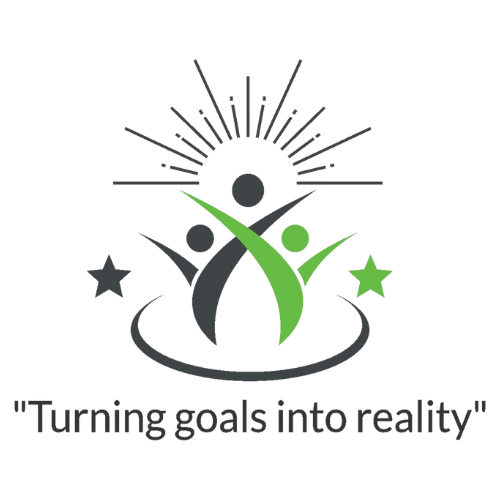Staff Communication Training

Soft skills training for employees
August 18, 2025
Best Personality Development Coach In India
August 18, 2025In every organization, communication is the backbone of success. Miscommunication among staff can lead to reduced productivity, conflicts, and customer dissatisfaction. This is why staff training has become one of the most sought-after professional development programs for companies across industries.
If you are looking for the best staff training in India, this blog will guide you through its importance, benefits, and how to implement it effectively.
What is Staff Communication Training?
Staff communication training is a structured program designed to improve communication skills among employees. It focuses on enhancing verbal, non-verbal, and written communication, ensuring that staff members collaborate effectively with colleagues, clients, and management.
This training usually covers:
- Effective verbal communication
- Active listening skills
- Written communication (emails, reports, proposals)
- Conflict management and resolution
- Body language and non-verbal communication
- Presentation and public speaking skills
Staff Communication Training – Fun Activities & Games
Effective communication at workplace is not just about talking… its about listening, understanding, body language and respect. Below are some interactive training activities and games you can use in your sessions.
1. Active Listening – “Back-to-Back Drawing” Game

How to Conduct:
- Divide people into pairs, ask them to sit back-to-back.
- One person describes a simple image (circle, star, house, tree etc.) while the other draws it.
- No naming the object directly, only describing.
- After 2–3 mins, compare the real and drawn picture.
Review Questions:
- Was the message clear enough?
- What barriers (jargon, missing details) created confusion?
- How did it feel giving vs. recieving instructions?
Key Takeaway:
- Clarity and simple language improves understanding.
- Miscommunication mostly happens due to assumptions and poor listening.
2. Role Play – “Difficult Conversations”
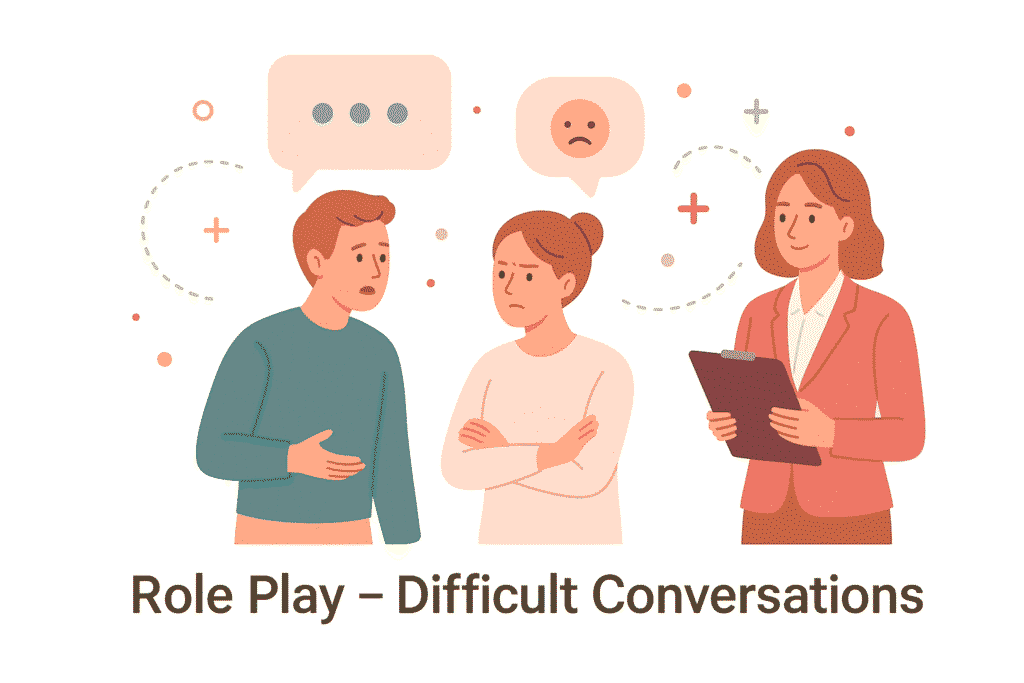
How to Conduct:
- Create workplace situations (giving feedback, customer complaints, resolving conflict).
- Two staff act it out, while others observe.
- Trainer gives review on tone, body language, and empathy.
Review Questions:
- Did the message sound respectful?
- How did body language change the impact?
- What could be improved?
Key Takeaway:
- Handle tough talks with empathy and structure.
- Tone of voice and body cues matter as much as words.
3. Icebreaker – “Two Truths and a Lie”
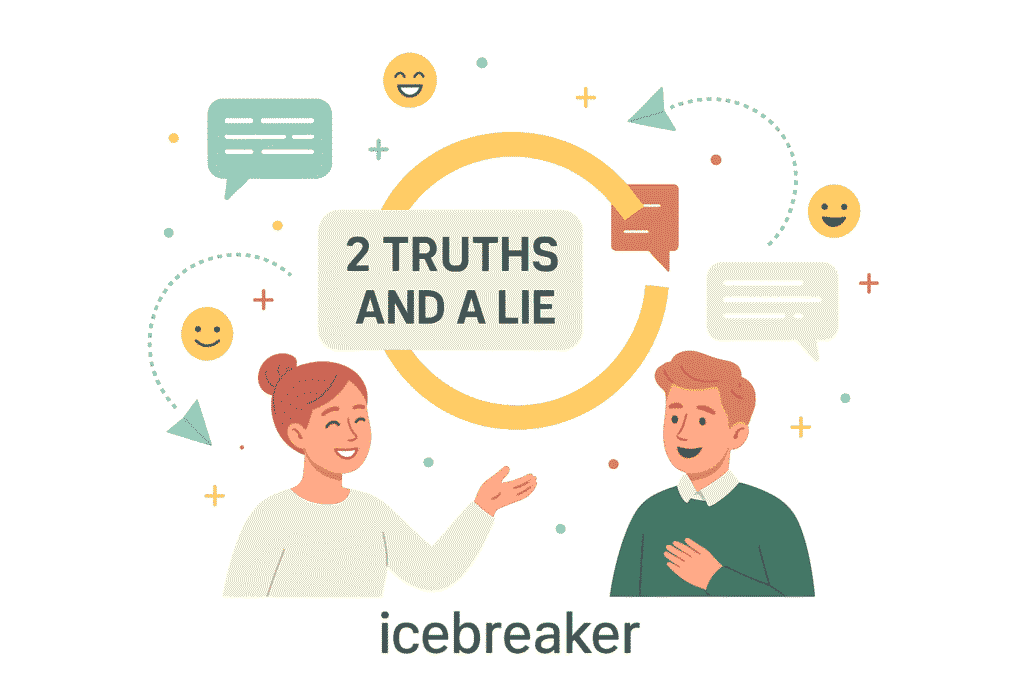
How to Conduct:
- Each person shares 2 truths + 1 lie about themselves.
- Others guess which is the lie by asking clarifying questions.
Review Questions:
- Did questions help you find the truth?
- Did you assume too quickly?
- Were facial expressions giving hints?
Key Takeaway:
- Clarify before judging.
- Asking good questions prevents wrong assumptions.
4. Non-Verbal Challenge – “Silent Line-Up”
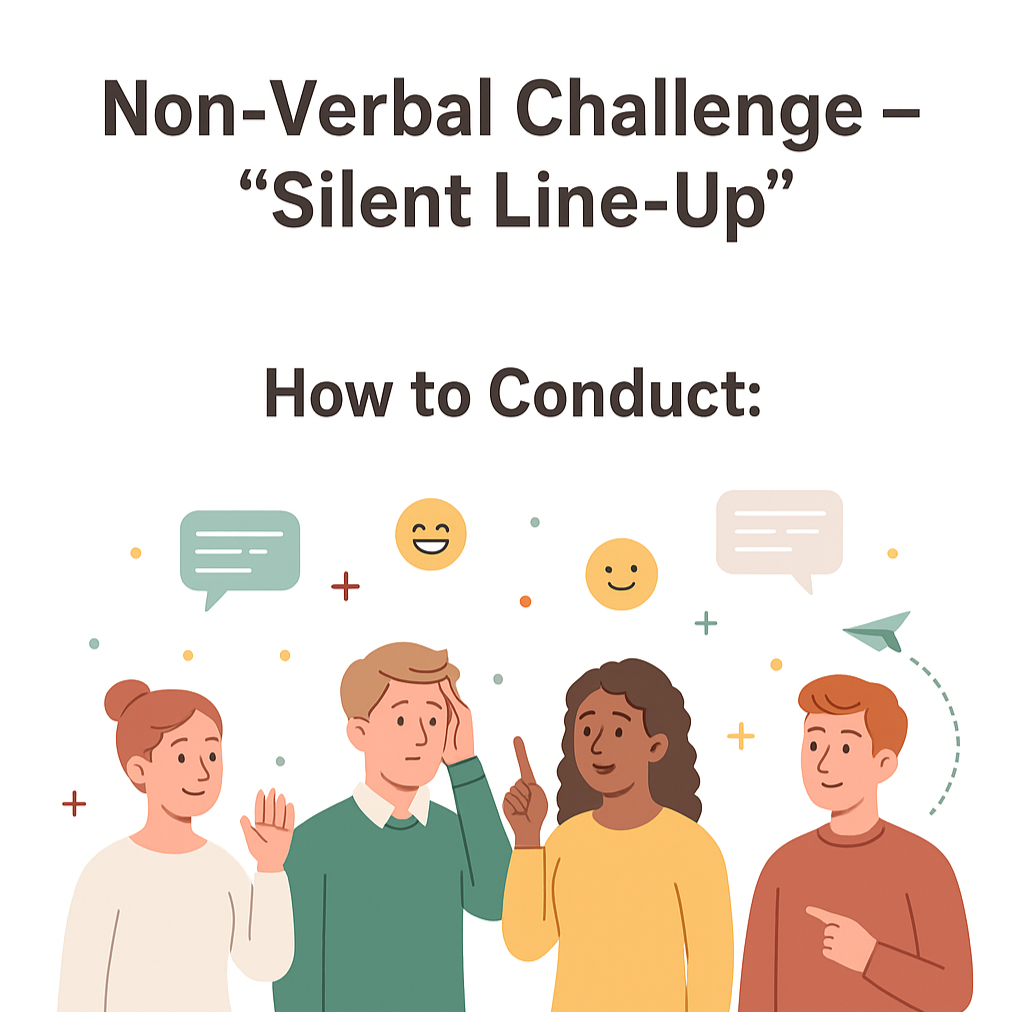
How to Conduct:
- Without speaking, participants must line up in order (e.g., birthdays, job joining date, height).
- Only hand signals, gestures, or facial expressions allowed.
Review Questions:
- What non-verbal signal worked best?
- Was it frustrating without words?
- How do gestures impact work communication?
Key Takeaway:
- 70% of communication is non-verbal.
- Being aware of body language helps build trust.
5. Team Game – “Chinese Whispers with a Twist”
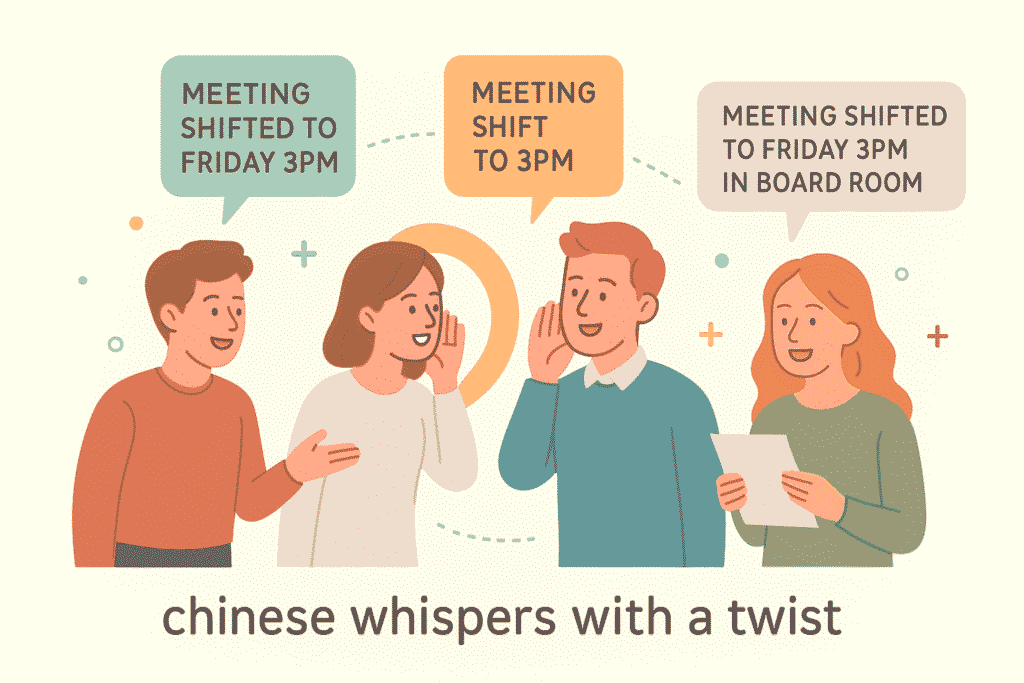
How to Conduct:
- Pass a workplace message (like “Meeting shifted to Friday 3 PM in Board Room”) down the line.
- Final person announces it out loud, compare with original.
Review Questions:
- Where did the distortion begin?
- Why did details get lost?
- Does this happen at work too?
Key Takeaway:
- Unclear messages spread errors.
- Always confirm before acting.
6. Group Problem-Solving – “The Survival Challenge”
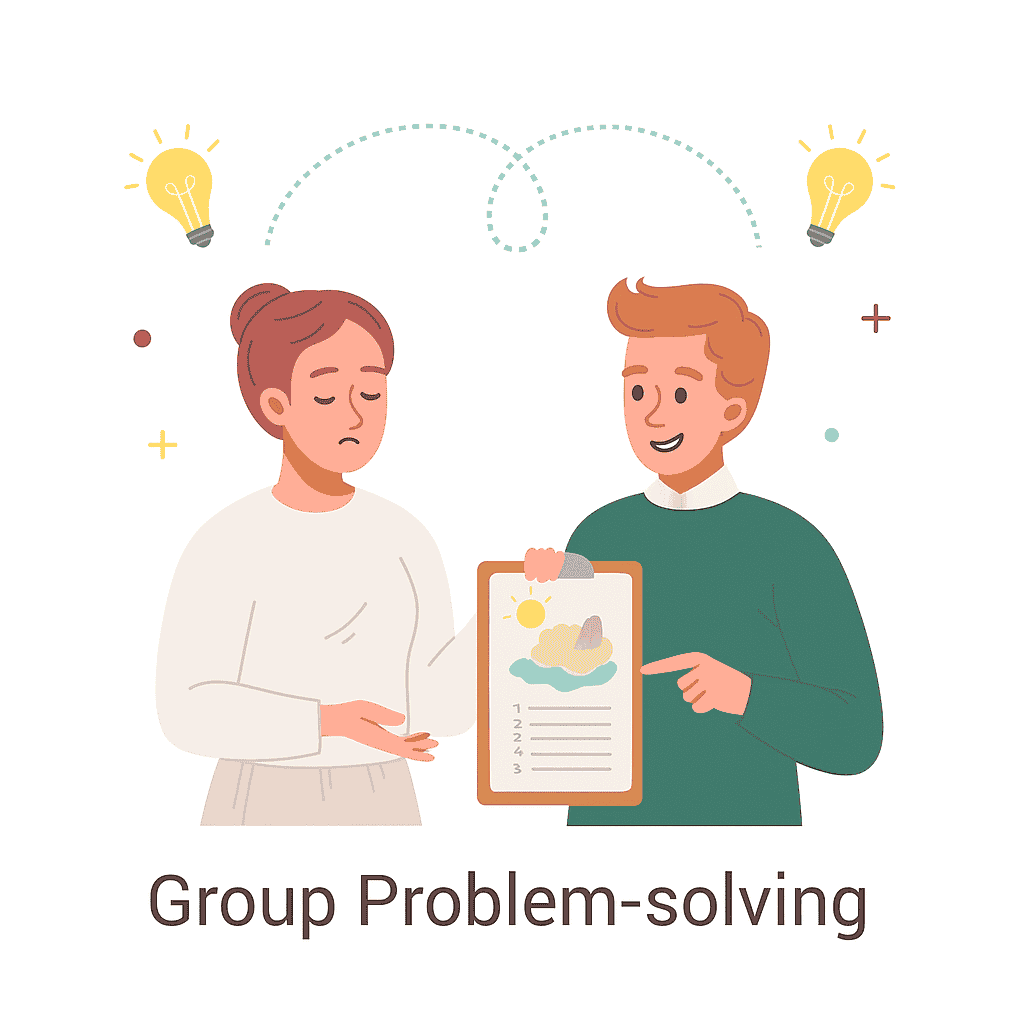
How to Conduct:
- Situation: “Stranded on island with 10 items. Rank them in survival order.”
- Step 1: Rank individually.
- Step 2: Discuss and agree as group.
- Compare results.
Review Questions:
- Did everyone get to share views?
- Was decision by discussion or domination?
- Did a leader naturally appear?
Key Takeaway:
- Group decision-making requires listening + compromise.
- Consensus comes when all opinions are valued.
7. Story Building Game – “Pass the Story”
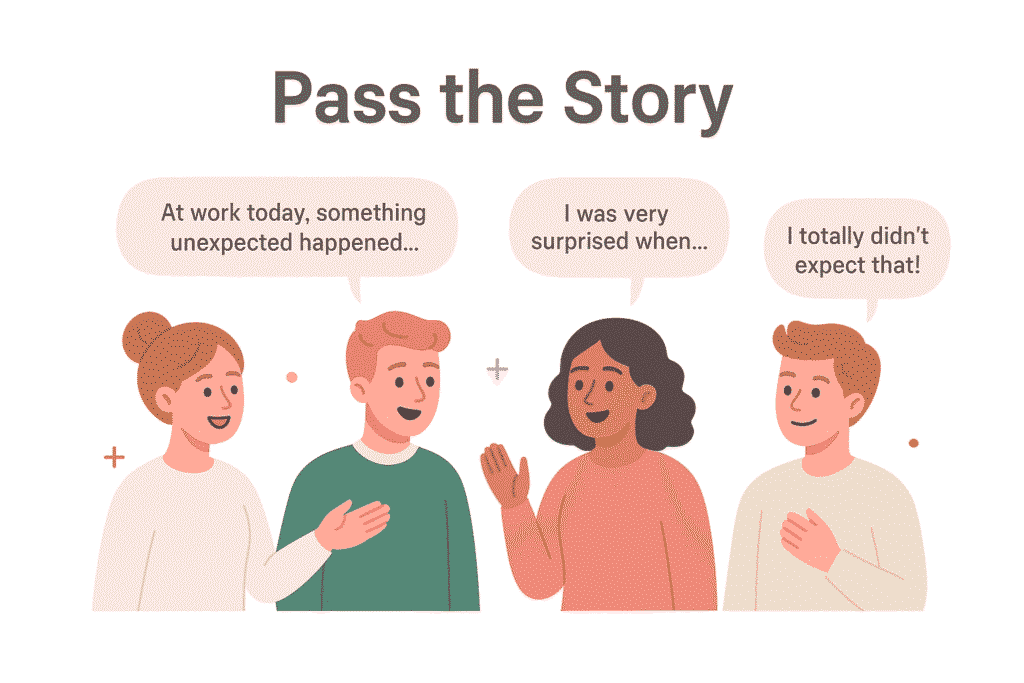
How to Conduct:
- Trainer starts with a line: “At work today, something unexpected happened…”
- Each person adds one line and story continues.
- End with a twist.
Review Questions:
- Did you listen before adding your line?
- Did the story make sense or break flow?
- Who tried to dominate and who stayed quiet?
Key Takeaway:
- Good communication = adding to others’ ideas, not cutting them.
- Listening first makes your input more relevant.
8. Paper Tower Challenge
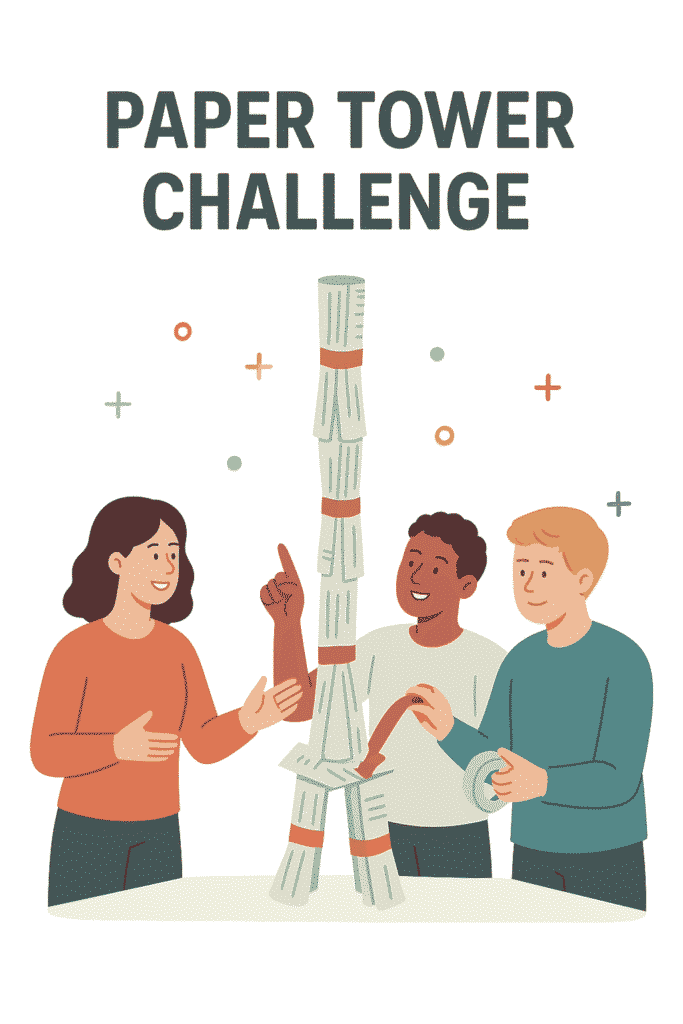
How to Conduct:
- Teams get newspaper, tape, scissors.
- Build tallest standing tower in 10 mins.
- First 3 mins = silence only gestures, then they can talk.
Review Questions:
- How was teamwork without words?
- Did open talk improve or create chaos?
- Did leadership emerge?
Key Takeaway:
- Clear roles and messages reduce confusion.
- Silence teaches value of verbal clarity.
9. Debate – “For & Against”
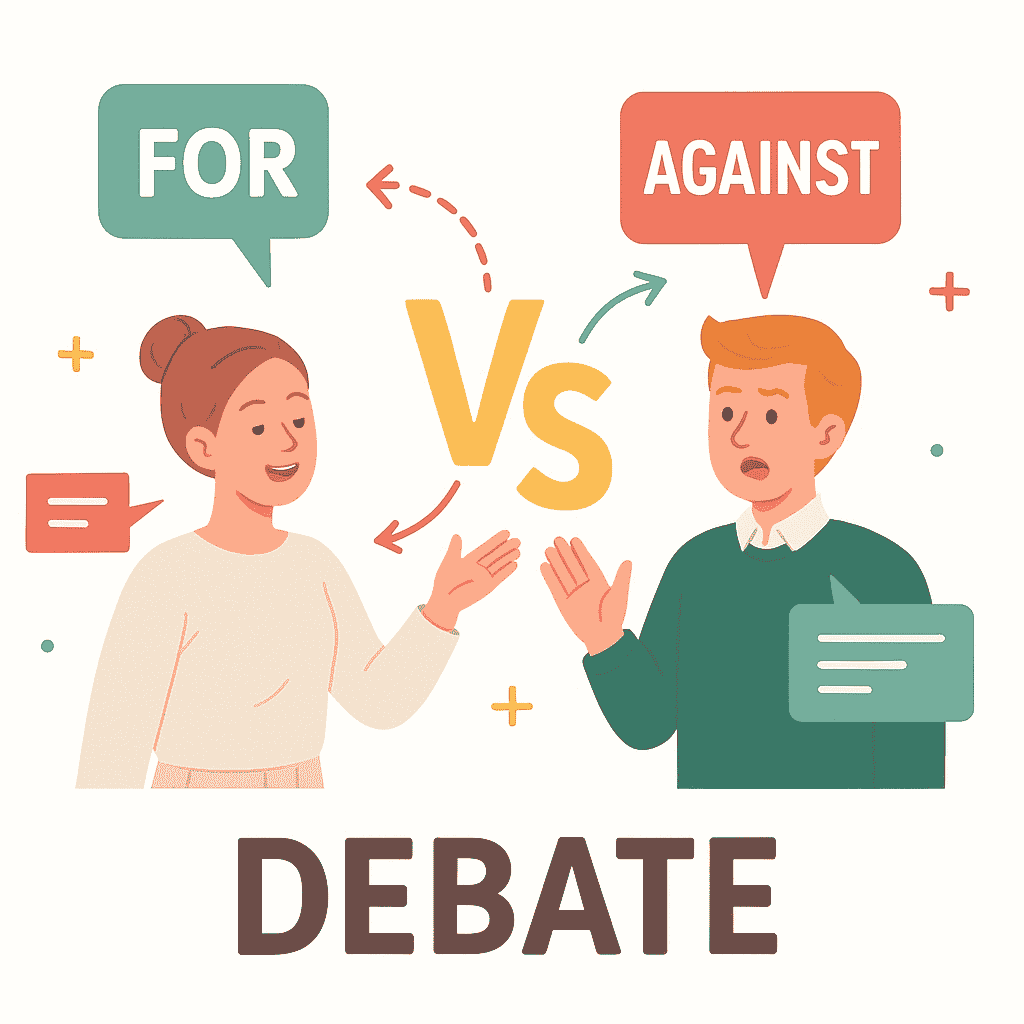
How to Conduct:
- Choose a simple workplace topic (Emails vs Phone Calls, Work from home vs Office).
- Divide group into For & Against teams.
- Each side debates with reasoning.
Review Questions:
- Did you listen to other side or only argue?
- Was persuasion based on facts or delivery style?
- How did body language impact persuasiveness?
Key Takeaway:
- Arguments should be respectful, fact-based.
- Persuasion is about tone, clarity and confidence.
10. The Blindfold Trust Game
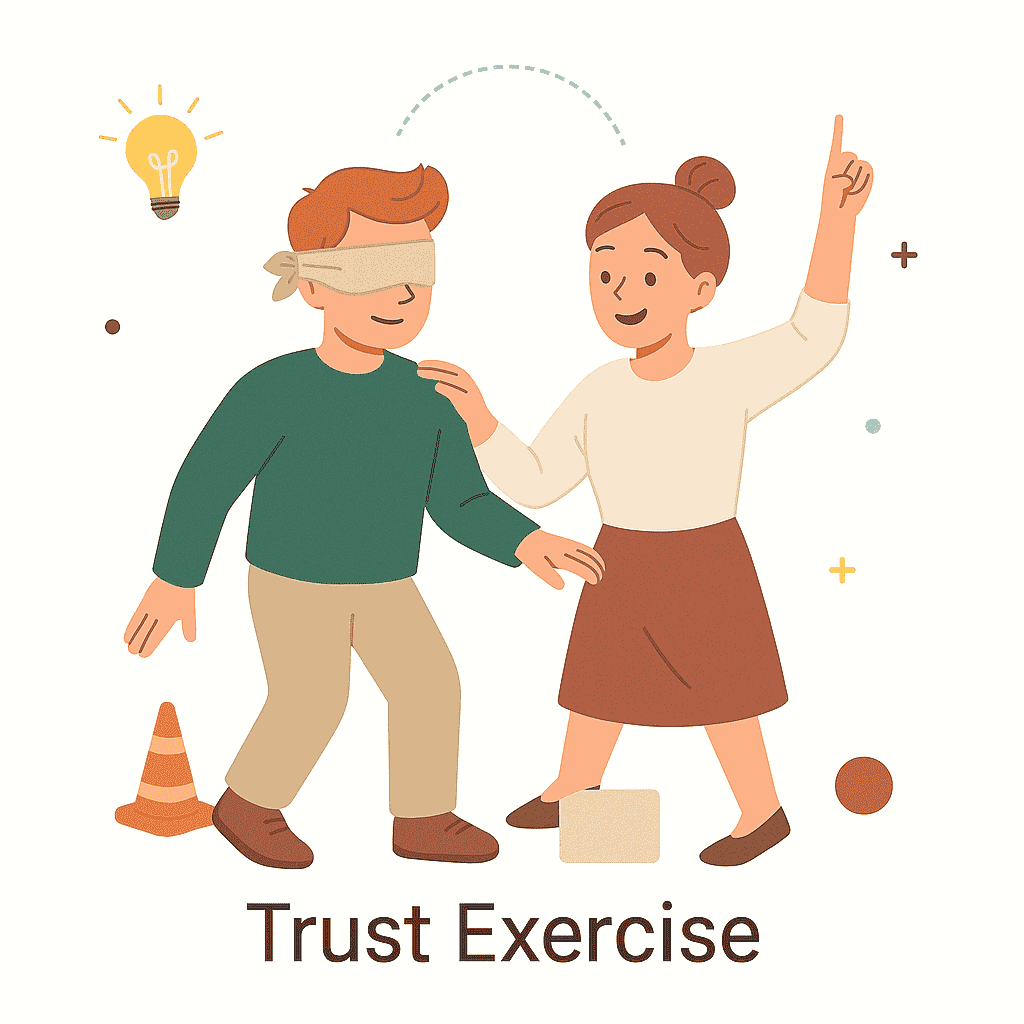
How to Conduct:
- One person blindfolded, other guides them through small obstacle course using only verbal instructions.
- Switch roles after completion.
Review Questions:
- How did it feel trusting only words?
- Was the guidance clear or confusing?
- Did tone of voice build trust?
Key Takeaway:
- Trust is built through clarity, patience, and reassurance.
- Words alone can guide but must be precise.
11. Listening Pairs – “3 Minute Talk”
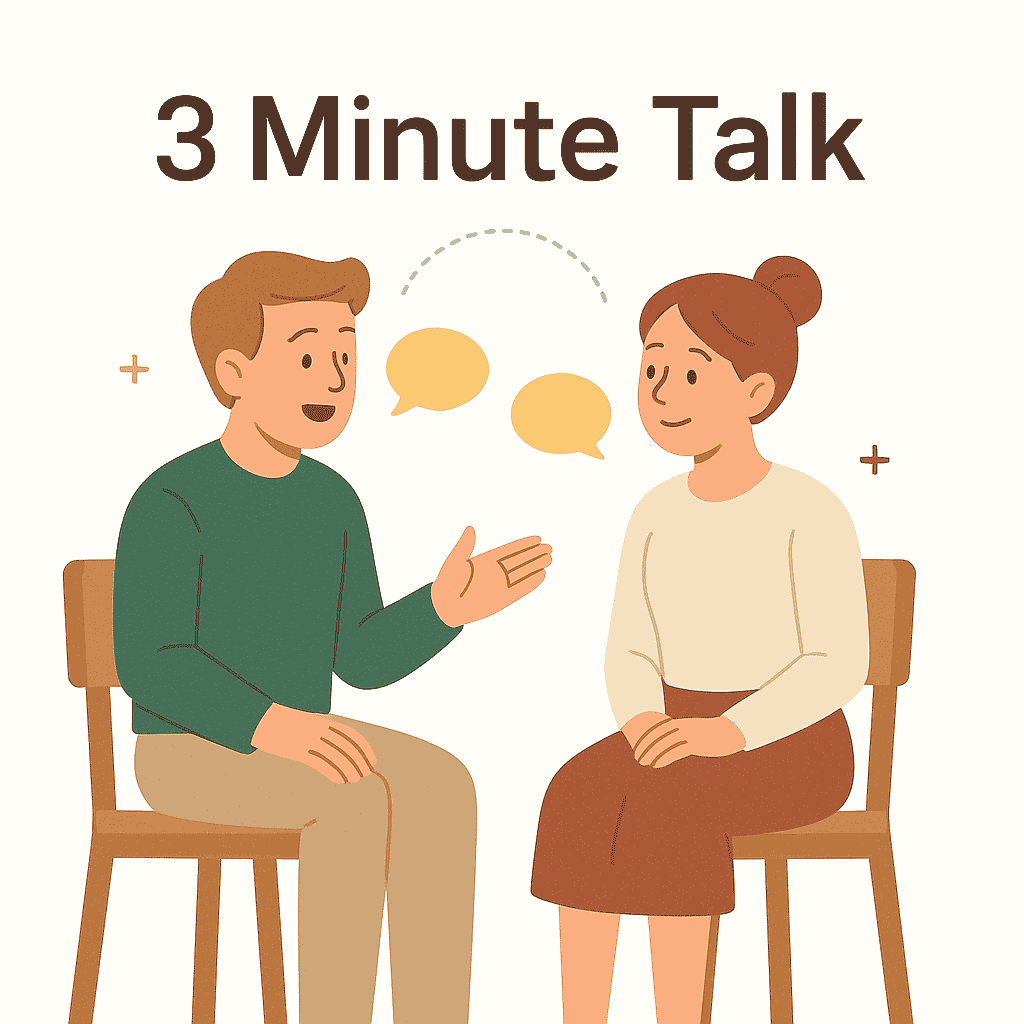
How to Conduct:
- One person speaks 3 mins on any topic (work, hobby, recent experience).
- Partner can’t interrupt, only listen. After 3 mins, listener summarizes.
Review Questions:
- Did you really listen or just prepare response?
- Was it hard not to interrupt?
- How did summarizing show active listening?
Key Takeaway:
- True listening means full focus.
- Summarizing proves understanding.
12. Workplace Simulation – “Broken Email Chain”

How to Conduct:
- Trainer writes an incomplete or vague email instruction.
- Teams must decode, clarify with trainer, and complete task.
Review Questions:
- Did lack of detail cause errors?
- How important is clarifying in workplace?
- How to avoid confusion in written messages?
Key Takeaway:
- Written clarity saves time.
- Ask questions rather than assume.
6 Essential Communication Skills Every Employee Should Master
| No. | Type of Communication | Skill You Need | Why It Matters |
|---|---|---|---|
| 1 | Listening | Active Listening | Don’t just “hear”—really listen. It shows respect, avoids mix-ups, and makes people feel valued. |
| 2 | Talking | Clear & Simple Messages | Keep it short and sweet. No jargon, no fluff. Clear talk saves time and avoids confusion. |
| 3 | Body Language | Non-Verbal Cues | Your face, hands, and tone say as much as your words. Good body language = good impression. |
| 4 | Connecting | Empathy | Put yourself in the other person’s shoes. It makes teamwork smoother and relationships stronger. |
| 5 | Speaking Up | Confidence | Say it like you mean it. Confidence makes people trust you and take your ideas seriously. |
| 6 | Teamwork | Feedback Skills | Feedback isn’t criticism—it’s growth. Give it nicely, take it positively. That’s how teams improve. |
Benefits of Staff Communication Training
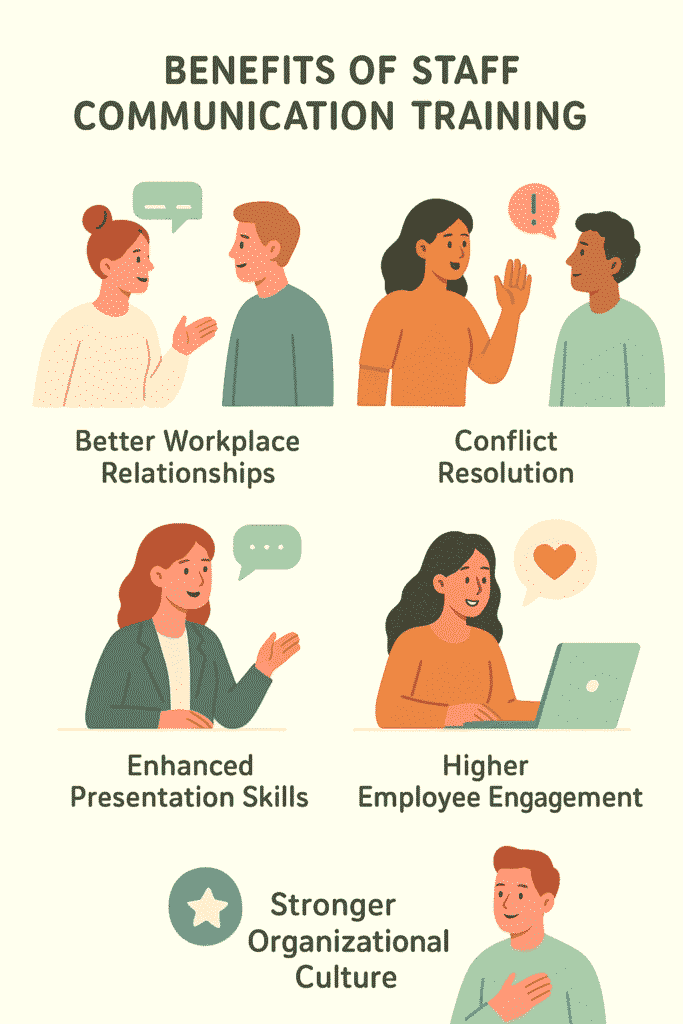
Better Workplace Relationships
With effective communication skills, employees interact more clearly and respectfully. This reduces misunderstandings and strengthens professional bonds across teams.
Conflict Resolution Skills
Training equips staff with practical tools to handle disagreements constructively. Instead of escalating, conflicts are resolved quickly, leading to healthier workplace dynamics.
Enhanced Presentation Skills
Strong communication training helps employees present ideas with clarity and confidence. Whether in meetings or client discussions, staff learn to express themselves persuasively.
Higher Employee Engagement
When employees communicate openly, they feel heard, valued, and motivated. This sense of inclusion boosts engagement and leads to improved job satisfaction.
Stronger Organizational Culture
Open and transparent communication fosters collaboration and accountability. Over time, this builds a positive workplace culture that supports growth and innovation.
Types of Staff Training Programs
- One-on-One Coaching – Personalized training for key employees or leaders.
- Workshops & Seminars – Group-based learning for teams.
- Online Training Programs – Flexible, cost-effective sessions for remote staff.
- Role-Play & Simulation Training – Real-life scenarios to build confidence.
- Corporate Training Packages – Customized modules for large organizations.
Top Skills Covered in Staff Communication Training
- Business Email Writing
- Customer Handling & Negotiation Skills
- Public Speaking & Presentation
- Leadership Communication
- Team Collaboration & Active Listening
- Conflict Management Techniques
Boost Your Team’s Potential with Sanjeev Bhutani – Leading Corporate Trainer
If you are looking for a corporate trainer for staff training, then you must connect with one of the best in the field – Sanjeev Bhutani.
Whether it’s presentations or meetings, communication or leadership, problem-solving or emotional intelligence, team management or collaboration – your employees will gain expertise in all these essential skills.
No more confusion in meetings or hesitation in activities. With Sanjeev’s training, employees actively participate, communicate effectively, and fulfill their responsibilities with confidence.
Now is the right time for corporates to invest in the right training and boost their employees’ growth and performance.
If you are located in Panchkula, Chandigarh, Mohali, or Ludhiana, connect with Sanjeev Bhutani, your trusted Corporate & Soft Skills Trainer.
FAQs About Staff Communication Training
Q1. What is staff communication training?
It is a training program designed to improve employees’ communication skills for better teamwork, customer handling, and workplace efficiency.
Q2. Who needs staff communication training?
Every employee—from entry-level staff to managers—benefits from improved communication skills.
Q3. How long does a staff communication training program take?
Programs can range from 1-day workshops to 3-month courses, depending on the depth of training.
Q4. Can staff training be done online?
Yes, many companies now offer online staff communication training with interactive tools, role plays, and video-based sessions.
Q5. How does staff training help in customer service?
Employees learn how to listen actively, respond politely, and resolve customer complaints professionally, improving client satisfaction.
Q6. What industries benefit the most from staff training?
IT, Pharma, Retail, Healthcare, Education, Hospitality, and Banking are among the top industries where communication training is essential.

Final Thoughts
Investing in staff training is one of the best decisions a company can make. It improves collaboration, reduces conflicts, enhances productivity, and strengthens organizational culture. Whether you’re a small business or a large corporation, communication training ensures your staff delivers their best performance.
📞 Get in Touch – Transform Workplace Communication Today!
Whether you’re an employee, manager, or team leader, effective staff communication is the key to building stronger relationships and driving success in 2025 and beyond.
If you’re interested in learning more about the Top Benefits of Staff Communication Training, or want to book a customized session for your team, we’re just a message away!
👤 Coach: Sanjeev Bhutani
As a certified Corporate Trainer, Sanjeev Bhutani empowers professionals to enhance communication, teamwork, leadership, and conflict management—skills that create a positive and productive workplace culture.
📌 Contact Details:
📱 Phone: +91-6280077678
📧 Email: connect@sanjeevbhutani.com
🌐 Website: www.sanjeevbhutani.com
💼 Corporate Workshops | 🎯 Staff Communication Training | 💻 Online & In-Person Sessions
